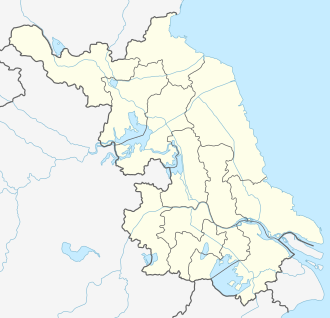Hongze Lake
Hongze Lake or Lake Hungtse (simplified Chinese: 洪泽湖; traditional Chinese: 洪澤湖; pinyin: Hóngzé Hú) is the fourth largest freshwater lake in China, in Jiangsu Province, China and is encompassed by the prefecture-level cities Suqian (Sihong County and Siyang County) and Huai'an (Xuyi County and Hongze County).

| Hongze Lake | |
|---|---|
| Hungtze Hu, Hung-tse Hu | |
 Hongze Lake | |
| Location | Jiangsu Province |
| Coordinates | 33°18′27″N 118°42′36″E |
| Primary inflows | Huai River |
| Basin countries | China |
Lake Hongze has quadrupled in size since the 12th century. A particularly large change happened in 1680, when the Yellow River changed its course and merged with tributaries of the Huai River. Heavy sediment from the Yellow River blocked the downstream of Huai River, and the pooling of the added water created Hongze Lake as it is known today. The city of Sizhou was completely submerged, as was the nearby Ming Ancestors Mausoleum (which was only rediscovered in the 1960s).[1]
References
- Eric N. Danielson, "The Ming Ancestor Tomb Archived 2013-09-27 at the Wayback Machine". CHINA HERITAGE QUARTERLY, No. 16, December 2008.